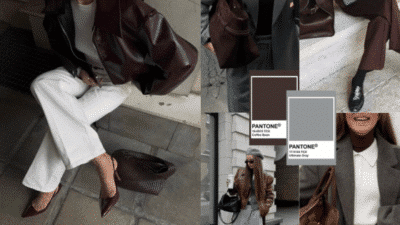

Sustainable fashion brands focus on reducing harm to the environment and improving fair labor practices while making clothes. They use eco-friendly materials, ethical production methods, and transparency to create clothing that has less impact on the planet and people.
These brands often lead the way in adopting new technologies and better design ideas that reduce waste and pollution. Customers who choose sustainable fashion support healthier ecosystems and more just working conditions.
Understanding how to recognize true sustainable brands helps shoppers make responsible choices that encourage the industry to change for the better.
Key Takeaways
- Sustainable brands use materials and methods that protect the environment.
- Ethical production and fair labor are key parts of sustainable fashion.
- Knowing how to spot real sustainable brands helps consumers shop wisely.
What Defines a Sustainable Fashion Brand
Sustainable fashion brands focus on using materials and methods that reduce harm to the environment and people. They ensure fair treatment of workers and provide clear information about their practices. This helps customers make responsible choices.
Ethical Sourcing of Materials


Ethical sourcing means getting raw materials in a way that respects nature and people. Brands often use organic cotton, recycled fabrics, or fibers grown without harmful pesticides. This approach limits environmental damage like soil erosion and water pollution.
They also avoid materials linked to deforestation, such as conventional leather or exotic animal skins. Some brands partner with communities that harvest materials sustainably. This supports local economies and protects ecosystems.
The goal is to trace where every piece of fabric comes from. Knowing the material’s origin helps brands ensure it meets ethical standards and reduce its carbon footprint.
Eco-Friendly Production Processes
Eco-friendly production means using less water, energy, and chemicals during manufacturing. Brands adopt clean technologies and avoid toxic dyes. They also reduce waste by recycling scraps or using zero-waste design methods.
Some brands use renewable energy sources to power factories. This cuts down greenhouse gas emissions. Others improve supply chain efficiency to lower pollution from transport.
Certifying processes as eco-friendly requires regular checks. These evaluations make sure factories meet strict environmental rules. This commitment helps reduce the industry’s overall environmental impact.


Fair Labor Standards
Fair labor standards protect the rights and well-being of workers. Sustainable brands pay fair wages and offer safe working conditions. They also avoid child labor and forced labor in their supply chains.
Workers should have access to benefits like healthcare and reasonable work hours. Brands often audit factories to confirm these standards are met. They may also join initiatives promoting workers’ rights.
A fair workplace reduces exploitation and boosts worker satisfaction. This leads to better quality products and stronger brand reputations.
Transparency and Certifications


Transparency means brands openly share their sourcing and production details. Customers can see where and how products are made. This builds trust and allows buyers to verify sustainable claims.
Many brands obtain certifications from recognized organizations. Common certifications include Global Organic Textile Standard (GOTS), Fair Trade, and OEKO-TEX.
These labels confirm that environmental and social standards were followed. They help consumers identify genuinely sustainable products amid marketing claims. Transparent brands often publish reports detailing their progress and challenges.
Leading Sustainable Fashion Brands
These brands are known for their strong commitment to eco-friendly materials, ethical labor practices, and transparency. They use organic fabrics, reduce waste, and often support fair trade workers. Each brand offers a different approach to sustainable fashion.
pact


Pact focuses on organic cotton clothing, mainly basics like t-shirts, underwear, and loungewear. The brand uses 100% organic cotton certified by GOTS (Global Organic Textile Standard). This ensures no harmful chemicals are used and farming practices support the environment.
They also prioritize fair trade. Pact works closely with farms and factories to ensure safe working conditions and fair wages. The brand is transparent about its supply chain, sharing details with customers.
Pact’s clothes are soft, durable, and made to last. They promote a slower fashion model by encouraging customers to buy less and choose better quality.
People Tree


People Tree is a pioneer in fair trade fashion, working directly with artisans in developing countries. It focuses on traditional handcrafting techniques like embroidery, weaving, and natural dyeing. This supports local communities while preserving cultural heritage.
The brand uses organic cotton and sustainable fibers. It avoids synthetic chemicals and toxic dyes, which helps protect the environment. People Tree also holds several sustainability certifications, including Fair Trade and GOTS.
The company is committed to social fairness and long-term partnerships with producers. It emphasizes transparency, sharing detailed reports on its environmental and social impact.
Stella McCartney


Stella McCartney is a luxury brand famous for rejecting leather, fur, and feathers. It uses innovative sustainable materials like organic cotton, recycled polyester, and regenerated cashmere. The brand also explores new fabrics made from wood pulp and mushroom leather.
They focus heavily on reducing waste through circular fashion. Stella McCartney designs products to be durable and recyclable. The brand tracks its carbon footprint and works to lower emissions.
The company supports animal rights and ethical labor worldwide. It regularly publishes reports with clear data on sustainability goals and progress.
Reformation


Reformation is known for trendy styles made with eco-friendly fabrics such as Tencel, organic cotton, and recycled materials. It tracks its environmental impact using a carbon calculator, helping shoppers see the savings in water, energy, and emissions.
The brand practices ethical manufacturing by partnering with factories certified for fair labor conditions. Reformation also focuses on waste reduction, producing clothes in small batches to control overproduction.
Its marketing highlights transparency and shares stories about the people behind the products. Reformation encourages customers to recycle old clothes through its programs.
Innovative Materials and Technologies
Sustainable fashion brands use new materials and methods to reduce environmental damage. They focus on fibers grown without harmful chemicals, fabrics made from reused items, and natural color options derived from plants. These choices help lower pollution and waste in the fashion industry.
Organic Fibers


Organic fibers come from crops grown without synthetic pesticides or fertilizers. Cotton is a common organic fiber, often replacing conventional cotton, which uses a lot of water and chemicals. Organic cotton reduces pollution and supports healthier soil.
Other organic fibers include hemp, linen, and wool from animals raised with eco-friendly practices. These materials tend to be softer on the skin and more durable. Brands choose organic fibers to ensure their clothes have a lower carbon footprint and safer production methods.
Recycled Fabrics


Recycled fabrics are made from old clothes, plastic bottles, or factory scraps. Using these materials helps cut down on landfill waste and reduces the need for new raw resources. Polyester from recycled plastic is popular because it turns waste into useful fabric.
Recycling fabric also saves energy compared to making new fabric. Some brands turn discarded fishing nets or textiles into strong recycled materials for shoes and bags. This approach supports a circular economy by keeping materials in use longer.
Plant-Based Dyes


Plant-based dyes come from natural sources like flowers, roots, and leaves, replacing synthetic dyes made with toxic chemicals. These dyes reduce water pollution and are often biodegradable.
Common dye plants include indigo, madder root, and turmeric. The colors can range from blues to reds and yellows. Although plant dyes may fade faster, brands use special techniques to improve colorfastness. This method protects workers and the environment from harmful substances.
Design Principles for Eco-Conscious Clothing
Sustainable fashion relies on thoughtful choices in design that reduce waste and extend the clothing’s life. Key focuses include creating styles that remain useful over time, avoiding excess fabric waste, and ensuring garments are strong and long-lasting.
Timeless and Versatile Styles


Eco-conscious brands often design clothes with simple, classic shapes. These styles avoid trends that go out of fashion quickly. This helps clothes stay wearable for years instead of being discarded after one season.
Versatility means pieces can be worn in different ways or for various occasions. For example, a neutral-colored jacket might work in both casual and formal settings. This reduces the need to buy multiple items.
Brands also choose colors and cuts that suit many people and body types. This focus makes the clothing more useful and reduces waste caused by unsold items.
Minimal Waste Patterns


Designers use patterns that make the most of fabric to prevent scraps. This practice is called zero-waste or minimal waste pattern making. It involves cutting patterns carefully so almost no fabric is wasted.
Some brands create multi-use pieces with modular parts to save material. They may also repurpose fabric offcuts for accessories or patchwork.
Using digital tools helps plan layouts tightly. This reduces the cloth leftover after cutting, lowering costs and environmental impact.
Longevity and Durability


Longevity means clothes are built to last many wears and washes. Brands select strong, high-quality materials like organic cotton or recycled polyester.
Seams and stitching are reinforced to avoid tears or loose threads. Durable zippers and buttons are chosen to withstand regular use.
Products are often tested for wear resistance before release. This ensures they maintain shape and color longer, reducing the need for replacements.
Certifications and Standards in Sustainable Fashion
Sustainable fashion brands often follow strict rules to prove their clothes are eco-friendly and ethical. These rules cover how materials are grown, how workers are treated, and if harmful chemicals are avoided. The certifications below are some of the most trusted in the fashion industry.
Global Organic Textile Standard (GOTS)


GOTS is a leading standard for organic fibers. It ensures that at least 70% of the textiles are organic and are made without toxic chemicals. This certification also checks water use, waste treatment, and eco-friendly dyes.
The standard covers the entire supply chain from farming to labeling. It requires fair labor practices, including safe working conditions and fair pay. Brands with GOTS certification help consumers know their clothes are both environmentally and socially responsible.
Fair Trade Certification


Fair Trade certification focuses on the rights and welfare of workers. It guarantees fair wages, safe work environments, and reasonable work hours. This helps reduce exploitation in the fashion supply chain.
It also supports community development through premiums paid to cooperatives. These funds often go toward education, healthcare, or better local infrastructure. Fair Trade labeled products show the brand cares about people behind the clothes, not just profits.
OEKO-TEX

OEKO-TEX tests textiles for harmful substances. It certifies that fabrics are free from dangerous chemicals like lead or formaldehyde. This protects both workers and consumers from exposure to toxins.
The certification applies to all stages of textile production. It also encourages brands to choose safer, more sustainable materials. OEKO-TEX labels help shoppers pick clothing that is safer for skin and the environment.
How to Identify Authentic Sustainable Brands
Authentic sustainable brands share clear signs. These include transparent product details, verified practices, and honesty in their claims. Knowing these can help shoppers avoid fake or misleading brands.
Reading Labels and Product Information


Labels tell a lot about a garment’s sustainability. Look for materials such as organic cotton, recycled polyester, or linen. Certifications like GOTS (Global Organic Textile Standard) or OEKO-TEX ensure the fabric meets strict environmental standards.
Check if the label mentions dyeing methods or water usage to see if they reduce pollution. Detailed care instructions that help clothes last longer also show brand responsibility.
Avoid vague terms like “eco-friendly” without proof. Brands that list detailed, specific information tend to be more trustworthy.
Researching Brand Practices


Researching a brand means looking beyond products. Authentic brands share how they make clothes, source materials, and treat workers.
Look for transparency reports or information about factory conditions. Brands committed to fair wages, safe working environments, and minimizing carbon footprints provide this data openly.
Check if the company supports recycling programs or uses renewable energy. Brands that show continuous improvement and third-party audits are often more authentic.
Recognizing Greenwashing


Greenwashing happens when brands pretend to be sustainable but aren’t. They use misleading words or images to appear eco-friendly.
Watch out for vague claims like “natural” or “green” without proof. Also, avoid brands focusing only on one small eco-friendly action, while ignoring bigger issues.
If the brand doesn’t back claims with certificates or facts, it could be greenwashing. Honest brands are clear about their limits and ongoing efforts.
Consumer Impact and Responsible Shopping
Consumers can make a big difference by choosing clothes carefully. They should think about how items are made, who makes them, and how long they last before buying. Small changes in shopping habits help support better fashion practices.
Building a Sustainable Wardrobe


A sustainable wardrobe focuses on quality over quantity. Consumers can choose clothes made from natural fibers like organic cotton, linen, or wool. These materials often use less water and fewer chemicals.
It is important to pick timeless styles instead of fast fashion trends. Durable clothing lasts longer, reducing waste. Washing clothes less often and repairing damaged pieces also help extend their life.
Consumers should check brands’ sustainability claims. Certifications like GOTS (Global Organic Textile Standard) or Fair Trade can guide better choices. Transparency about factories and sourcing is a key sign of responsible brands.
Supporting Local Designers


Buying from local designers helps reduce the environmental impact of long shipping routes. It also supports fair wages and working conditions nearby.
Local brands often use more sustainable methods because they can oversee production directly. Customers can visit stores or workshops to learn how products are made.
Shopping local also boosts the local economy. It encourages unique fashion instead of mass-produced items. This helps keep fashion more personal and less wasteful.
Secondhand and Circular Fashion


Secondhand shopping is a smart way to reduce waste. Thrift stores, online resale sites, and clothing swaps give garments a longer life.
Circular fashion includes recycling and upcycling. Old clothes can turn into new fabrics or new designs to prevent landfill waste.
Consumers should consider renting clothes for special occasions. This cuts down on buying items that are used only once.
By choosing secondhand or circular options, shoppers lower their environmental footprint and save money.
Challenges Facing Sustainable Fashion Brands
Sustainable fashion brands face several hurdles that affect their ability to operate and grow. These include managing complex supply chains, expanding their sustainable practices on a larger scale, and dealing with the higher costs that impact customer access.
Supply Chain Complexities


Sustainable fashion brands must carefully manage every step of their supply chain to ensure ethical and eco-friendly practices. This includes sourcing organic or recycled materials, working with suppliers who meet environmental standards, and maintaining transparency.
Many suppliers do not have clear records of their processes or certifications, making it hard to verify claims. Brands often rely on multiple suppliers across different countries, which adds complexity and risk.
Tracking the origin of materials and ensuring fair labor practices requires constant monitoring. Small errors or a lack of oversight can damage a brand’s reputation quickly.
Scaling Up Sustainability


Growing a sustainable fashion brand is difficult because environmental practices are often harder to maintain at large volumes. For example, organic fabrics may be limited in supply, and sustainable dyeing processes can be slower than conventional ones.
When demand increases, brands might be tempted to compromise on sustainability to meet production deadlines. Many struggle to balance growth while keeping their core values intact.
Additionally, scaling up involves investing in new technologies or equipment, which can be costly and take time to implement properly.
Cost and Accessibility


Producing sustainable clothing typically costs more due to higher material prices and ethical labor wages. These costs often make products less affordable for many consumers.
Brands try to keep prices reasonable but face challenges competing with fast fashion brands that use cheaper, less sustainable methods.
Limited access to sustainable products is another issue. Many sustainable brands sell online or in select stores, so people without internet access or nearby shops might not find these options easily.
Key cost factors include:
- Organic or recycled materials
- Ethical labor wages
- Sustainable manufacturing processes
These factors contribute to the overall price and limit mass-market accessibility.
The Future of Sustainable Fashion Brands
Sustainable fashion is evolving with new ideas and partnerships shaping how clothes are made and sold. These changes aim to reduce environmental harm while keeping style and quality.
Emerging Trends and Innovations
Brands are using recycled materials, like ocean plastic and fabric scraps, to make clothes. New technology helps create fabrics that need less water or energy. For example, some companies use bio-based dyes that are safer for the environment.
Another trend is circular fashion, where products are designed to be reused or recycled easily. This means fewer clothes end up in landfills. Digital tools, like 3D printing and AI, help brands reduce waste by making precise amounts or virtual samples.
Sustainable brands also focus on transparency, sharing info about where and how clothes are made. This helps customers make better choices.


Collaborations and Industry Partnerships
Many brands work together and team up with other industries to boost sustainability. By sharing resources and knowledge, they can solve big problems faster.
For example, some brands partner with textile recycling centers to turn old clothes into new fabric. Others work with technology firms to develop better materials or track supply chains.
Industry groups also set standards and certifications to help brands meet environmental goals. These partnerships encourage wider change, making sustainable fashion more common.
- 440shares
- Facebook0
- Pinterest440
- Twitter0



